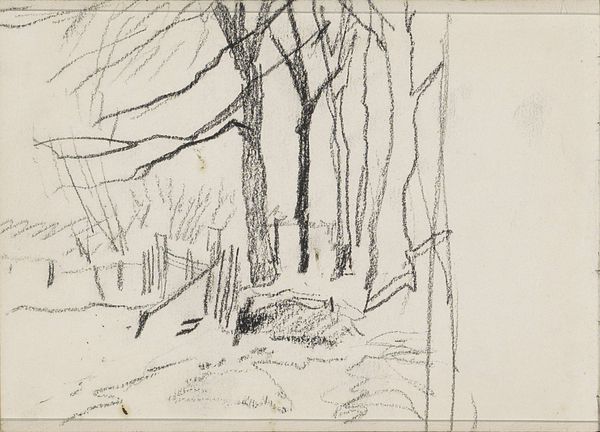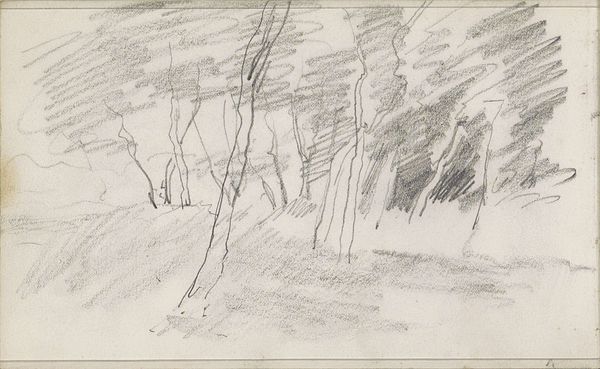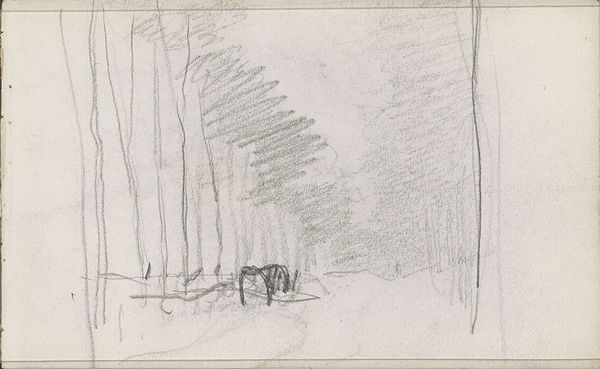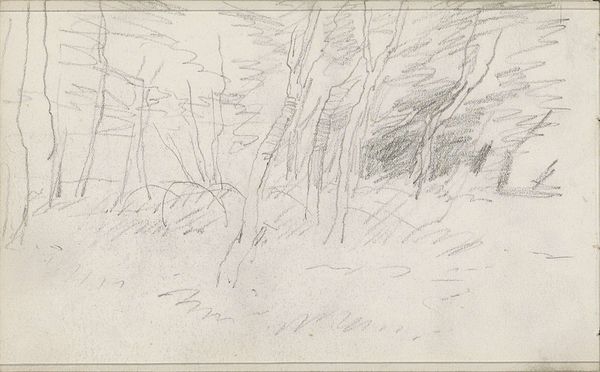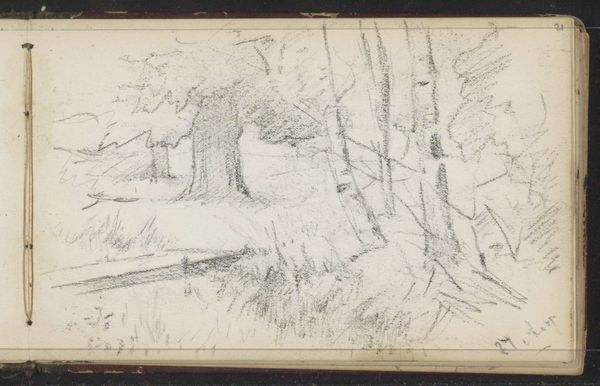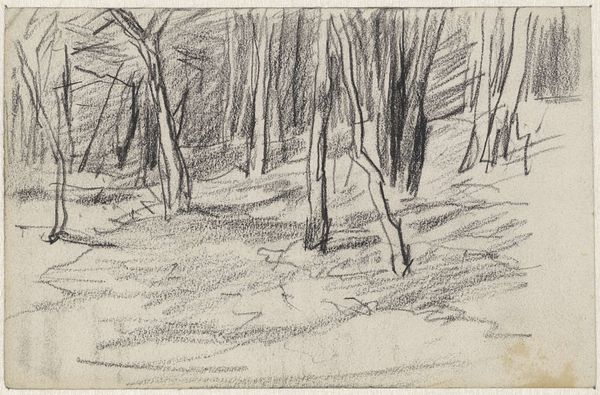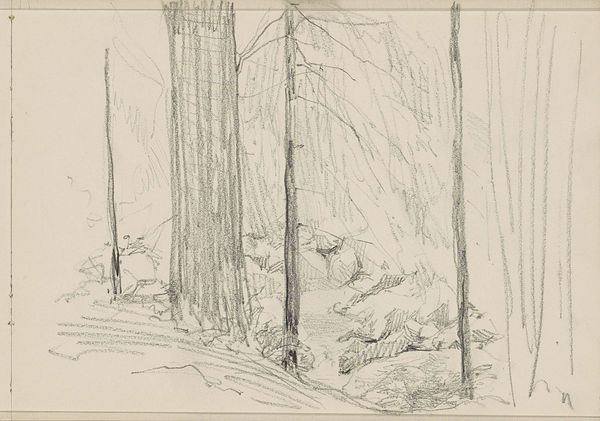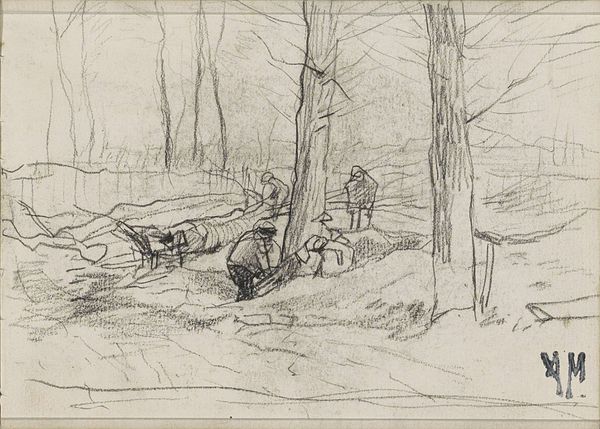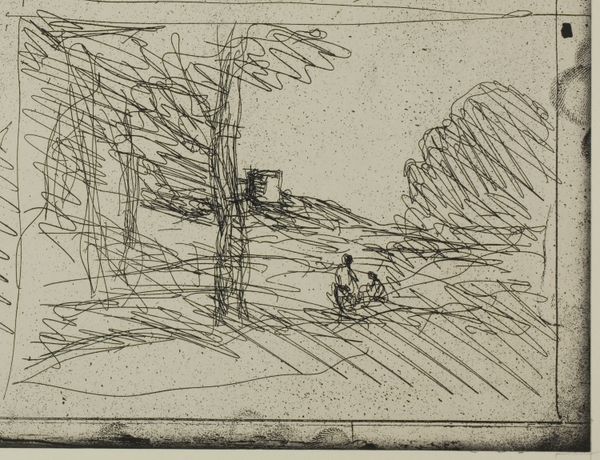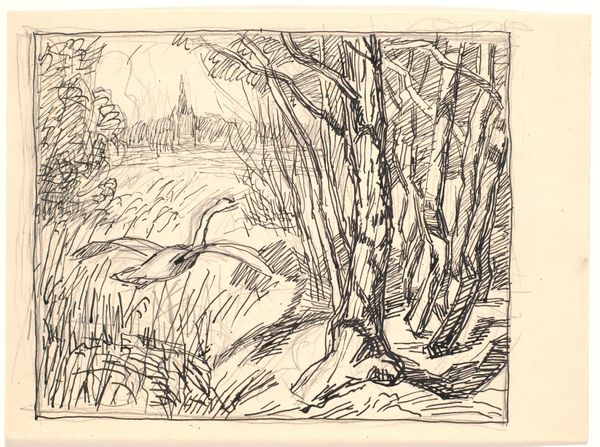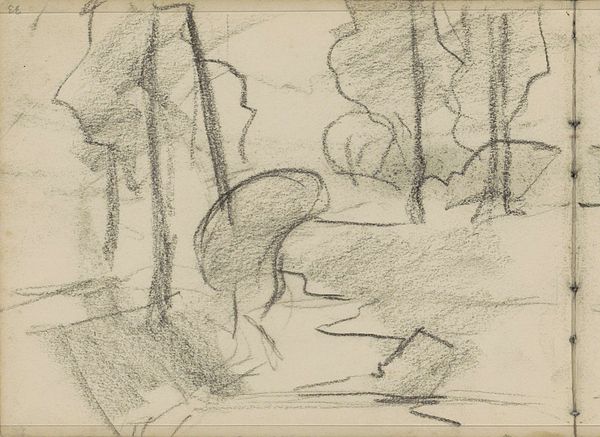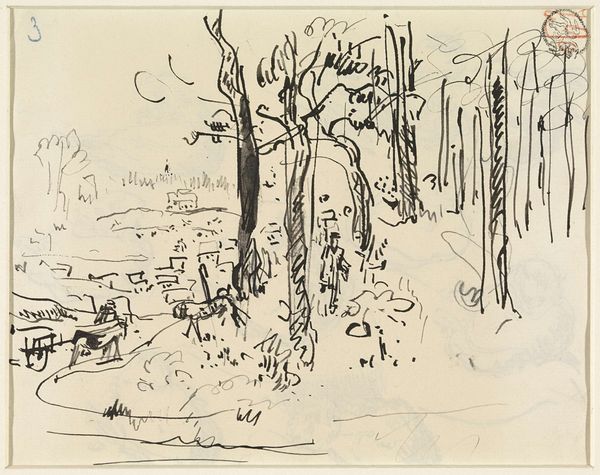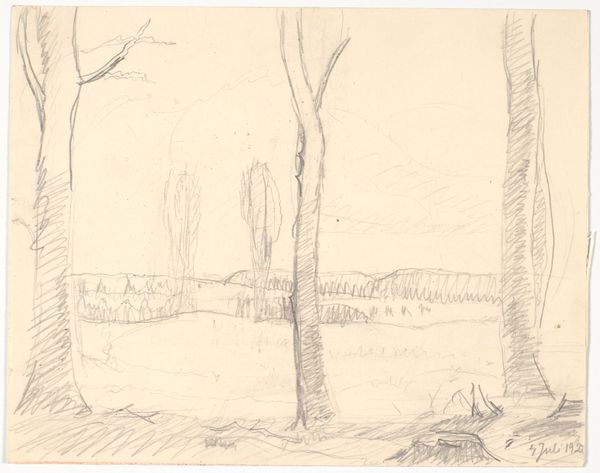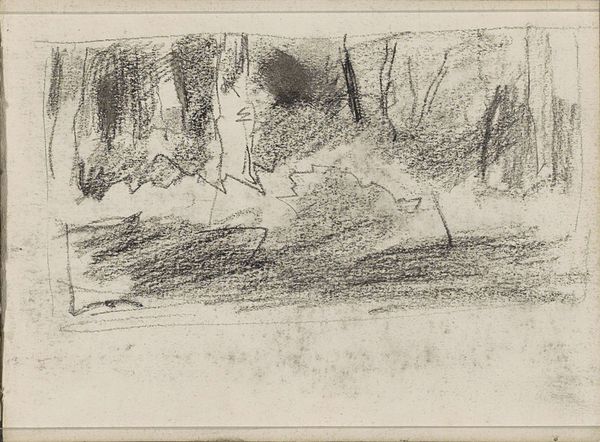
drawing, pencil, graphite
#
drawing
#
amateur sketch
#
quirky sketch
#
pen sketch
#
incomplete sketchy
#
landscape
#
personal sketchbook
#
sketchwork
#
pen-ink sketch
#
pencil
#
pen work
#
graphite
#
sketchbook drawing
#
realism
#
initial sketch
Copyright: Rijks Museum: Open Domain
Editor: We’re looking at "Woodcutter by a Tree" by Anton Mauve, likely created sometime between 1848 and 1888. It's a graphite drawing. It has an unfinished, intimate quality – almost like glimpsing into the artist's personal sketchbook. What strikes you most when you look at it? Curator: I see a fascinating layering of symbols relating to man's relationship with nature. The woodcutter, dwarfed by the towering trees, suggests a kind of yielding to natural forces. What do you make of the landscape itself, and the repeated verticality? Editor: I see the verticality as representing growth and life, contrasting with the woodcutter who's essentially enacting a destructive process. Is that a fair reading? Curator: I think that's a good start. The tree, often a symbol of life, knowledge, and connection to the divine, is juxtaposed with the woodcutter. The action implies disruption. Note too how sketch-like it all is, a gesture towards rather than a concrete "thing," perhaps suggesting the ephemerality of such work, such violation. Editor: So, the sketch-like quality underscores the transient nature of the woodcutter's impact versus the enduring presence of the forest? Curator: Precisely. Mauve might be questioning humanity's perceived dominance over the natural world and illustrating nature's stubborn perseverance. What do you think of the dark and light strokes and what feelings they might evoke? Editor: I hadn't considered the weight those simple graphite lines carry. The darkness brings a sense of melancholy. It feels less like a celebration of labor, more like a meditation on its consequences. Thank you for unveiling that cultural context. Curator: My pleasure. Remember that symbols resonate over time, they accumulate meaning through the cultures that use them and through time. Exploring a work of art involves a peeling back those layers to see how symbols work upon our imaginations.
Comments
No comments
Be the first to comment and join the conversation on the ultimate creative platform.
